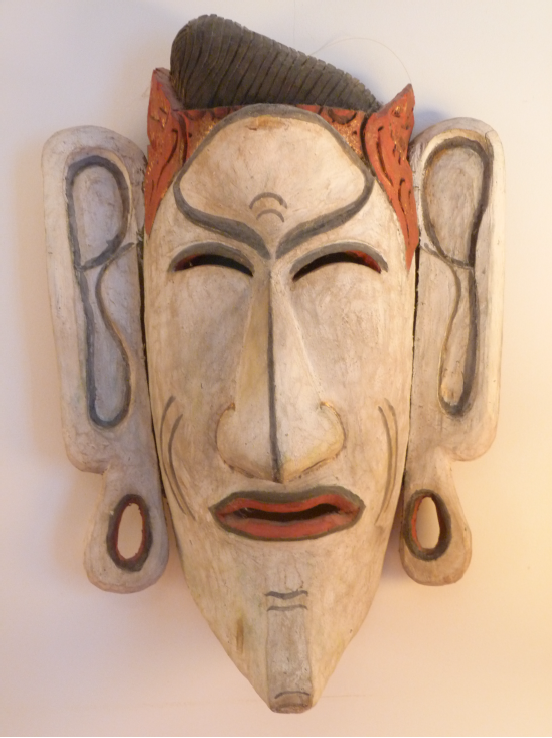Balinese Dance Mask
Topeng has existed in Bali for at least 300 years, and remains enormously popular throughout Bali. There are many forms of topeng, including topeng pajegan, a form specifically performed by a solo dancer playing several masked characters, and topeng panca, normally performed by a troupe of five dancers. The topeng characters not only explicate the story, but also make a connection between that story and the event at hand, which might be a religious ceremony such as a temple anniversary, a human rite of passage such as a funeral, or even a political rally. The character not only reveals the traditional meaning of the ceremony, but also makes comments on politics, morality, and the modern function of the ceremony.
Some of the masks danced in topeng include the old man, clown characters, servants, and kings. This mask is probably that of a minister or priestly advisor to a king, rather than a king himself. Traditionally, the first two or three characters to come out are the opening, non-speaking characters.With the entrance of the speaking penasar, servant to the king, the story begins to be revealed. Other masks advance the story in one way or another: by singing in the lofty language of kings and princes, by interpreting and commenting on that language for the audience, by cracking jokes, and, at moments when the music stops, through sparkling banter and dialogue with other characters.
The masks that are used in topeng, as with all other Balinese masked performance, are carved by revered mask makers out of a light wood called pule. Mask makers have a special respected place in Balinese society, and those who carve masks for ceremonial types of masked dance do so out of live trees.
The music for topeng underscores the masks's character, reflecting refinement, strength, or humor. Music for the refined characters will have longer "gong cycles" or rhythmic patterns, while the funnier and coarser character are accompanied by shorter gong cycles.
Image: Wood, pigment; 40.5 x 26 x 14cm.
Nelson South East Asia Collection © 2025
